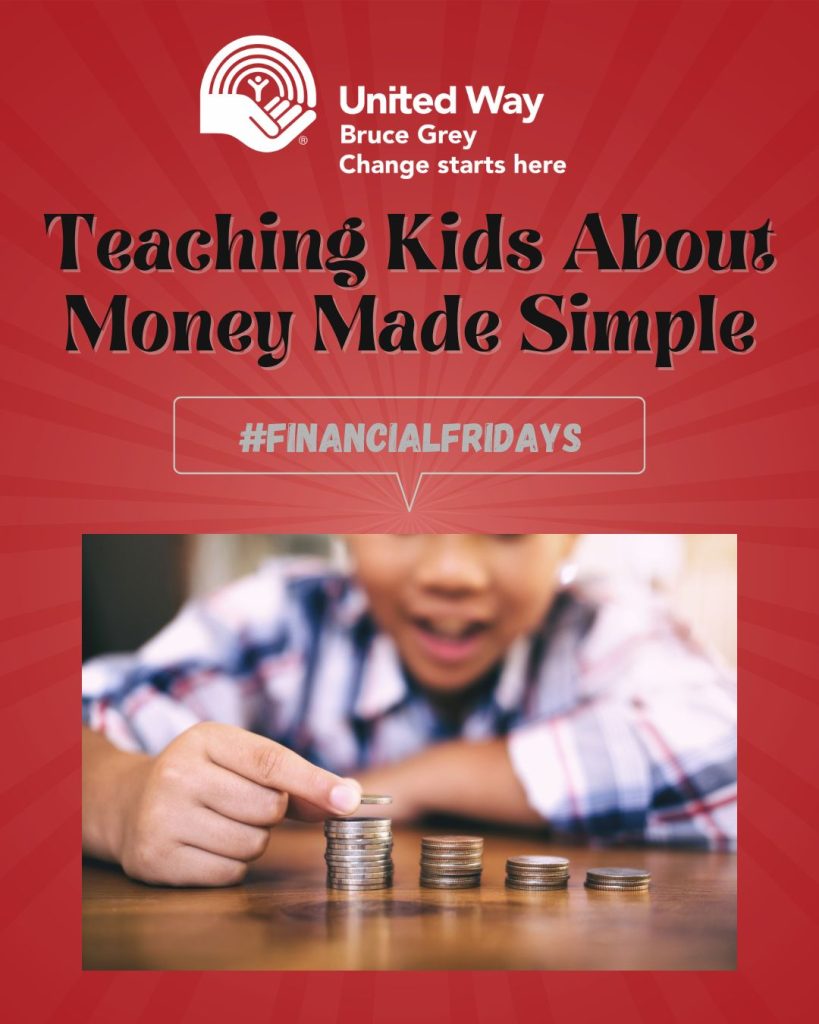#FinancialFridays: Teaching Kids About Money Made Simple

A while ago, my son asked for candy while we were waiting to check out at a store. Without thinking, I replied, “Money doesn’t grow on trees!” He looked completely confused, and that was my cue that I had not said what I actually meant. He asked for candy, and I came back with something about trees. Not exactly helpful.
Talking with the kids in your life about money matters. You have a lot of knowledge to share, and the lessons children learn when they are young from the adults around them shape their habits for years. These early money messages stick.
There is a stigma around talking about money, but we can be the positive deviants, the ones who choose to do it differently. Think of it like being a quiet superhero for change.
Here are a few common reasons we avoid the conversation, and why they don’t have to stop us:
• We want our kids to feel safe, so we avoid sharing our financial worries. The challenge comes when they face their own money worries later and no one ever taught them how to manage their money or their feelings around it.
• We assume they will learn about money when they are older. In reality, learning small, age appropriate lessons as they grow gives them the foundation they will build on through their teen and adult years.
• We might not feel confident about our own money skills and don’t know how to talk about it. That is okay. We can learn, stumble, get up again, and keep learning. Showing kids that one choice does not define them is a powerful lesson.
So how do we start?
Be an example
Kids watch the choices we make and the reasons behind them.
• Take them with you when you shop.
• Talk about what you are buying and why you choose one item over another.
Include them
Learning sticks when kids get to participate.
• Give them small jobs like holding the list, spotting items, or tracking costs as you go.
• Let them hand the cashier the money or tap the card. Narrate what is happening. For example: We picked these items. Now we are paying for them. When you tap the card, the beep means the bank is sending money to the store for our purchase.
Let them make decisions
Kids can practice decision-making safely and learn from the outcome.
• Ask what they like or don’t like about items when you shop.
• Give them a small amount of money to manage based on their age and your comfort level. Talk through the decision, but let them make the final call.
• If they end up not liking their choice, talk about it. What didn’t work? What did they expect? What can they think about next time?
For more ideas, visit the links below:
MM-Financial-Literacy-for-the-Family.pdf
Free Financial Literacy Course l ABC Money Matters (This one had resources in a variety of languages!)
Thank you to ABC Life Literacy Canada for their Money Matters tools.
https://www.canada.ca/en/financial-consumer-agency/services/teaching-children-money.html
Thank you to the Canadian Government for this information.
https://www.ciro.ca/office-investor/guides-investors/parents-guide-raising-money-smart-kids
The Canadian Investment Regulatory Organization has some more tips and materials.
With warm regards,
Caroline Araujo Abbotts (She/Her)
Financial Literacy Program Coordinator

